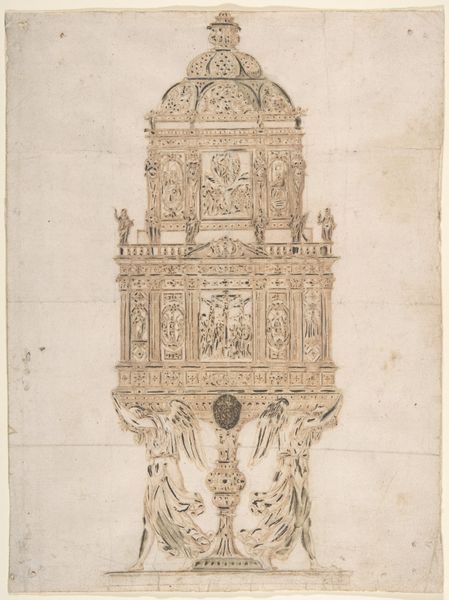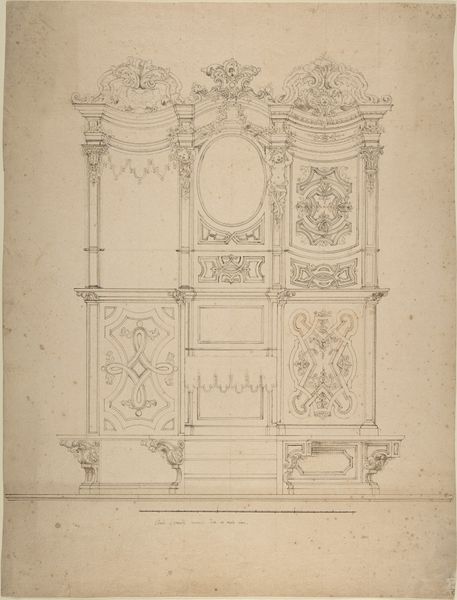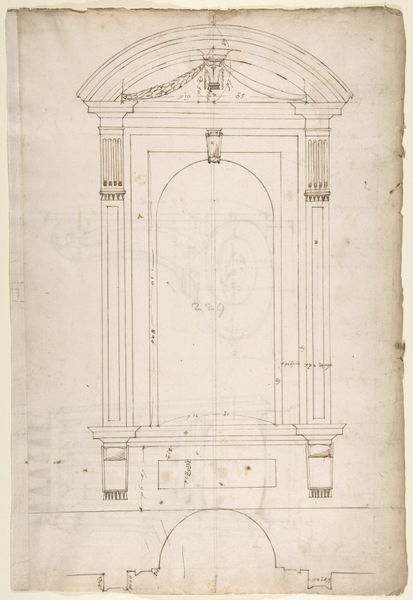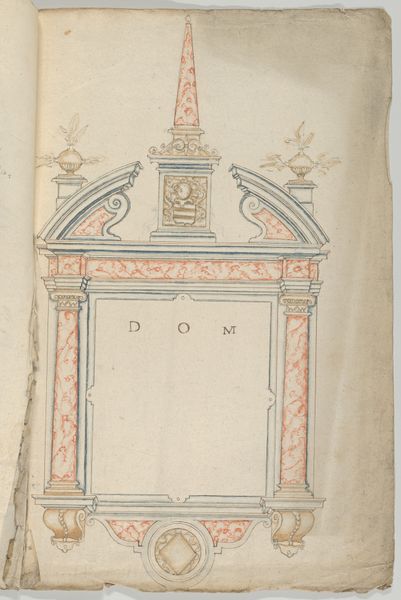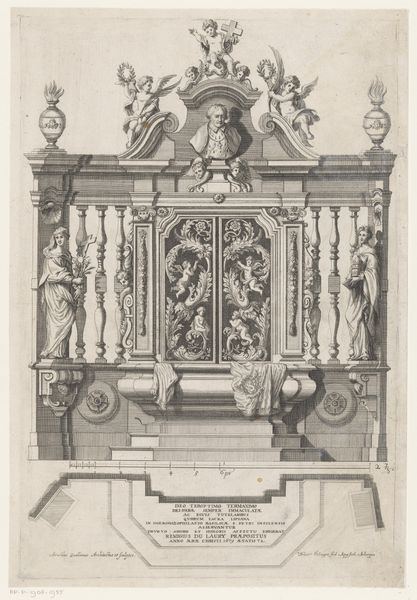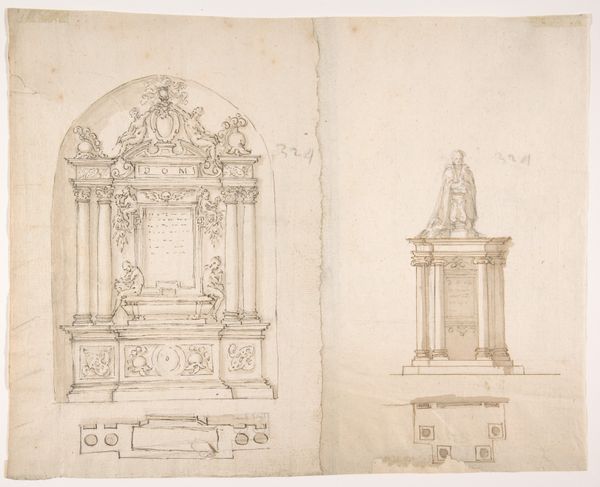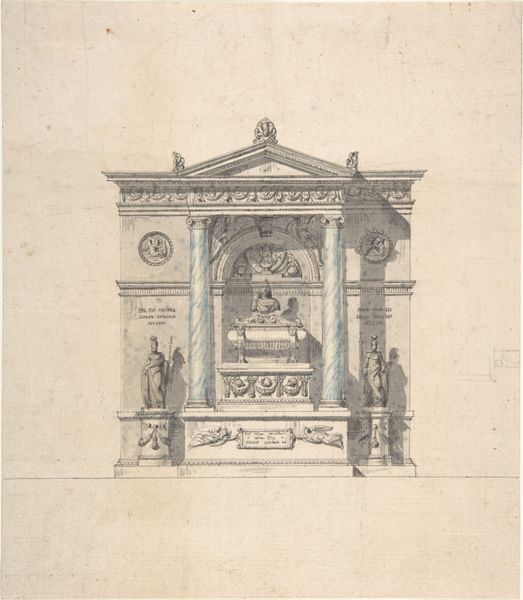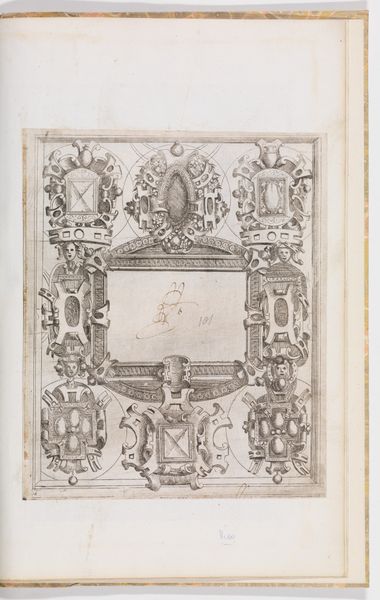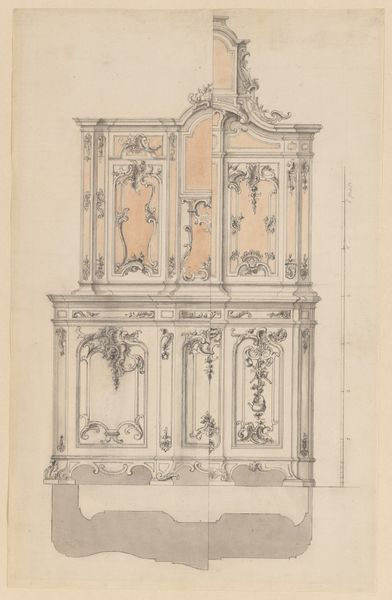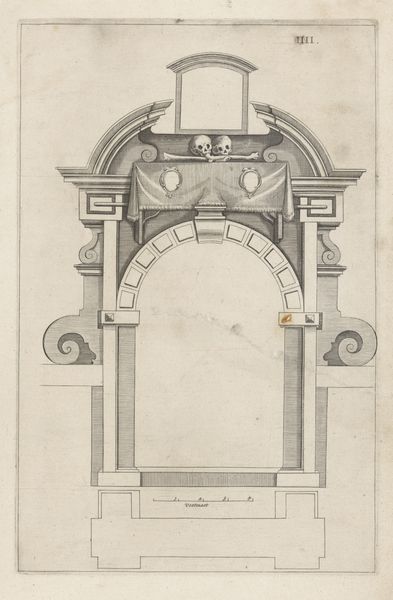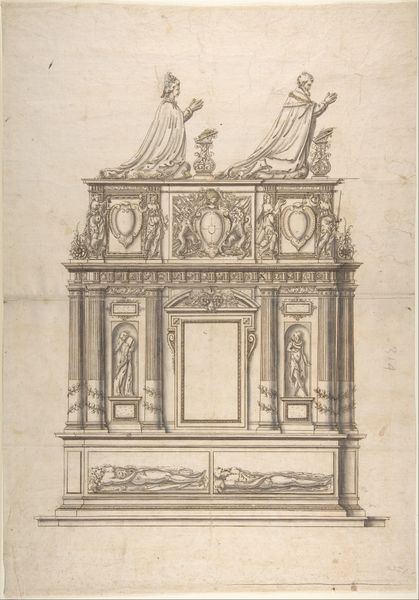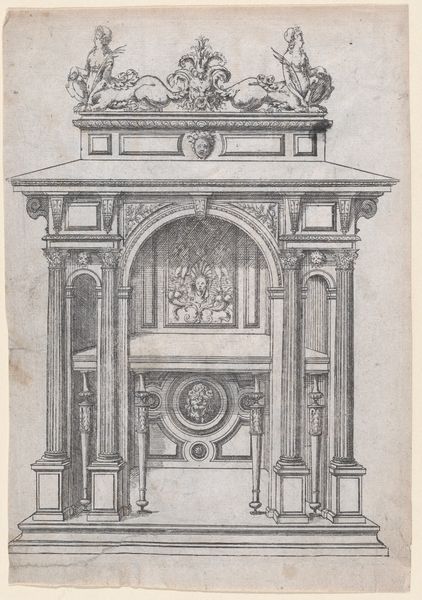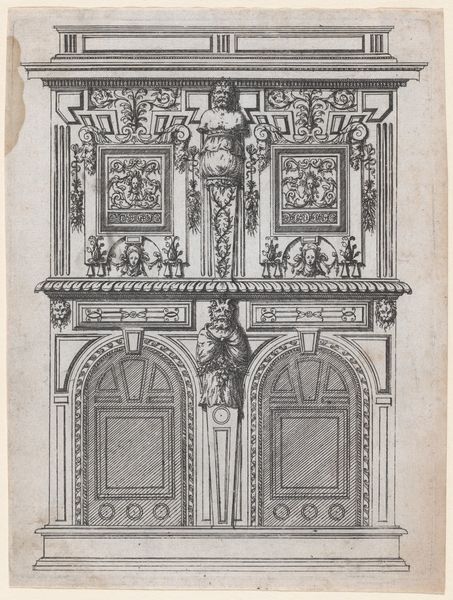
Design for a Choir Screen with a Tomb in Red-Gray Marble 17th century
0:00
0:00
drawing, print, ink, pen, architecture
#
drawing
#
medieval
# print
#
traditional architecture
#
ink
#
pen
#
watercolor
#
architecture
Dimensions: Sheet: 22 1/2 × 13 3/8 in. (57.1 × 34 cm)
Copyright: Public Domain
Curator: Take a look at this arresting design, conceived in the 17th century. We know it as "Design for a Choir Screen with a Tomb in Red-Gray Marble," an anonymous work currently residing at The Met. The artist employed pen, ink, and watercolor to bring it to life, resulting in a detailed architectural print. Editor: The first thing that strikes me is the interplay of solidity and lightness. The red-gray marble adds this somber weight, anchoring the design. Yet the watercolor washes give it a kind of ethereal feel, as if it exists in a liminal space between conception and reality. Curator: Precisely. While we don't know its specific historical application, these choir screens separated the clergy from the laity and became vital architectural elements. We see here the use of faux marble, achieved via watercolor to embellish a somewhat plain space in a more affordable, yet artistic way. Its placement near a tomb suggests its significance for commemorative events and services for the deceased. Editor: Absolutely. Red marble is rich with symbolism; often it is associated with sacrifice, valor, even martyrdom, linking the space to those remembered there, and enhancing the architecture's inherent spiritual meaning. Even the details in the stonework around the heraldic shield seem to reinforce themes of honor and legacy. Curator: The choice to leave this design unsigned offers interesting context. Its purpose wasn't artistic fame, but rather architectural functionality. This practical use meant artistic expression became less about individual brand and more about common purpose of the era’s aesthetic and spiritual ideals. The work itself takes on an aura, divorced from celebrity, of an anonymous servant to societal values. Editor: Ultimately, seeing such meticulous plans offers a profound meditation on enduring human concerns—legacy, faith, and memory. And it illustrates the power of visual language. Curator: Yes, indeed. Examining a relatively utilitarian plan also offers a reflection on art and artistic intention, and how societal values are interwoven in art history.
Comments
No comments
Be the first to comment and join the conversation on the ultimate creative platform.
